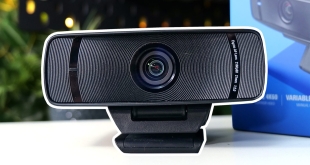I find it hard to believe that anyone would use a smartphone for anything but the most basic of photographs on the ‘spur of the moment', but research handled by Digitimes would indicate that camera sales in 2013 will drop.
Digitimes say that the 7.2% drop to an estimated 93.8 million units in 2013 will be due to slow economic conditions and ‘increasing competition from smartphones'.
They add “Taiwan's four main ODMs will ship 36.398 million units, slipping 12.3% with a combined global market share of 38.8%, falling 2.3pp from 2012, according to Digitimes Research.”
Canon will be the largest vendor in 2013, claiming 18.51% of the total shipment volume, followed by Nikon with 18.24%, Sony 14.92%, Samsung Electronics 13.64%, Fujifilm 9.59%, Panasonic 7.46%, Olympus 6.39%, Casio 3.20% and Pentax 0.59%.
Digital Photography website DigitalRev have an interesting article published which compares leading smartphones to an SLR. Obviously a DSLR delivers superior image quality, however the convenience of a smartphone is hard to dispute. Clearly they are becoming ‘enough' for Joe Public, who are happy with a reasonably good photograph.
Whenever I go out however on a trip, or am traveling Europe, I would tend to pop my Canon 5D into my bag, bulky and all as it is. I would use my smartphone camera, maybe if I am out for dinner and an ‘interesting' moment pops up which demands a quick picture at the table.
I have to admit, im finding my SLR is becoming a chore to carry around with me on a regular basis. Our other team members have some seriously large SLR cameras (Nikon D3 etc), which weigh several kilograms. It might not sound like much, but try hauling this around with you for an 8 hour event and fatique quickly hits the arms and shoulders. Specialist companies such as Blackrapid have created body straps specifically for this purpose, and they work well.
The battle right now seems to be in making camera equipment smaller, and it is not only smartphones that are challenging the SLR. New formats such as Micro Four Thirds are proving popular with the DSLR audience who don't want a full sized camera body.
One of the biggest sellers right now is the weather sealed Olympus OMD EM5, which while expensive has caused a major ripple in the market – it has a sophisticated 5 axis body stabilization system. I know many DSLR purists who have adopted one of these cameras as they are so easy to carry around and can compare well against a DSLR. Due to the mirrorless design you have to deal with an electronic viewfinder, but the pros outweigh the negatives.
An interesting article over at the Photography Blog highlights the Micro Four Thirds Olympus EM5 against the excellent full size Nikon D7000.
This article, which is primarily ‘non technical' shows the advantages of the new Micro Four Thirds format. The Sony NEX7 is another popular smaller camera (APS-C), but the lenses are quite large for this range, which somewhat defeats the purpose of a smaller body.
We can't see DSLR's dying anytime soon, but it is clear that the advancements in technology are pushing image quality further and further, all while reducing the physical size and weight of the camera body. That can't be a bad thing.
Kitguru says: What camera do you use? Are you happy with it?
 KitGuru KitGuru.net – Tech News | Hardware News | Hardware Reviews | IOS | Mobile | Gaming | Graphics Cards
KitGuru KitGuru.net – Tech News | Hardware News | Hardware Reviews | IOS | Mobile | Gaming | Graphics Cards





